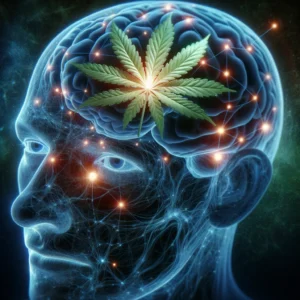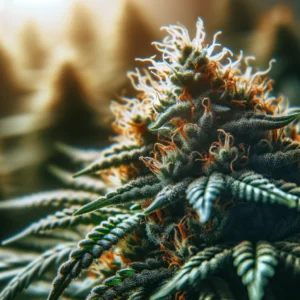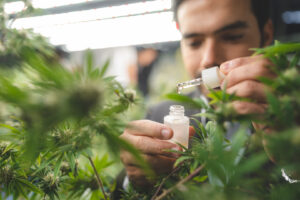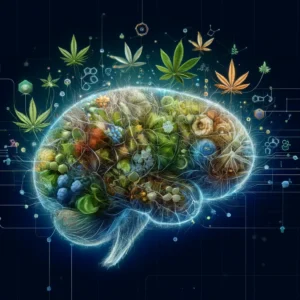Unveiling the Power Within: A Comprehensive Guide to Cannabinoids and Their Impact on Health and Wellness
 Cannabis is a complex and controversial plant, known for its diverse use throughout human history. While many are well-acquainted with the infamous compounds THC and CBD, the intricate web of cannabinoids in cannabis offers a trove of potential for health, wellness, and beyond. With a surge in medical and recreational cannabis use, understanding cannabinoids and their intricate dance within our bodies is more crucial than ever. This comprehensive guide will unravel the science behind cannabinoids, their interaction with the human body, and the profound effects they can elicit on our health.
Cannabis is a complex and controversial plant, known for its diverse use throughout human history. While many are well-acquainted with the infamous compounds THC and CBD, the intricate web of cannabinoids in cannabis offers a trove of potential for health, wellness, and beyond. With a surge in medical and recreational cannabis use, understanding cannabinoids and their intricate dance within our bodies is more crucial than ever. This comprehensive guide will unravel the science behind cannabinoids, their interaction with the human body, and the profound effects they can elicit on our health.
Understanding Cannabinoids: The Molecules That Shape the High
Imagine cannabinoids as the magical molecules within the velvety green leaves of the cannabis plant. There are over a hundred different cannabinoids discovered, but two steal the spotlight for different reasons; THC, the superstar infamous for its psychoactive might, and CBD, the underdog lauded for its myriad of therapeutic possibilities.
The Origins of Cannabinoids
Cannabinoids are naturally occurring compounds found primarily in the resinous flowers of the cannabis plant. They serve a variety of functions such as protecting the plant’s delicate reproductive structures, deterring predatory animals with their distinct aroma, or possibly luring in beneficial pollinators.
The Main Players: THC and CBD
 Tetrahydrocannabinol, or THC, is the principal psychoactive component of cannabis.
Tetrahydrocannabinol, or THC, is the principal psychoactive component of cannabis.
It’s the compound responsible for the ‘high’ sought after by recreational users, but it also contains powerful pain-relieving properties.
On the other hand, cannabidiol, or CBD, does not produce a high but may provide relief from various ailments like chronic pain, inflammation, anxiety, and epilepsy.
Other cannabinoids, such as CBN (cannabinol) and CBG (cannabigerol), are starting to gain recognition for their potential medical benefits in their right or as precursors to other cannabinoids through natural biosynthesis pathways within the plant.
How Cannabinoids Interact with the Body: Unraveling the Endocannabinoid System
 The human body has an inbuilt system perfectly designed to interact with cannabinoids—the endocannabinoid system (ECS). This intricate network of neurotransmitters, receptors, and enzymes plays a pivotal role in maintaining homeostasis within the body, helping to keep various physiological processes in proper balance.
The human body has an inbuilt system perfectly designed to interact with cannabinoids—the endocannabinoid system (ECS). This intricate network of neurotransmitters, receptors, and enzymes plays a pivotal role in maintaining homeostasis within the body, helping to keep various physiological processes in proper balance.
The Endocannabinoid System: A Balancing Act
The ECS consists of three main components:
- Endocannabinoids, the body’s natural cannabinoids that are produced on demand in response to changes in the body’s environment.
- Cannabinoid receptors, including CB1 found predominantly in the brain and nervous system, and CB2 primarily located in the immune system.
- Enzymes that help break down endocannabinoids once their job is done, such as fatty acid amide hydrolase (FAAH) and monoacylglycerol lipase (MAGL).
Cannabinoid Receptors and Beyond
Cannabinoids interact with the ECS by binding to these receptors like a lock and key, either by imitating the body’s own endocannabinoids or by altering how the ECS processes them. This interaction can influence everything from mood, memory, appetite, pain, and immune response.
Effects and Benefits of Cannabinoids: Beyond the High
The effects and benefits of cannabinoids are vast and can have a profound effect on health and wellness.
Navigating the Highs and Lows of THC
THC is known for its ability to alter perception and behavior, to cause euphoria and relaxation. But it also possesses a suite of medicinal effects, with research indicating positive outcomes for pain management, alleviating nausea, and improving appetite in certain conditions.
The Healing Mission of CBD
CBD, in contrast, doesn’t produce a high but still manages to yield a host of benefits. Research suggests it may help with anxiety, depression, chronic pain, epilepsy, and more. Its potential for managing seizure disorders led to the development of the first FDA-approved cannabis-derived medication, Epidiolex.
The Lesser-Known Cannabinoids
Other cannabinoids, though less researched, are still making contributions to the world of wellness. Cannabichromene (CBC), for instance, has shown potential as an anti-inflammatory and pain reliever. Meanwhile, Cannabigerol (CBG) is considered the ‘mother’ of cannabinoids due to its role as the precursor of several other cannabinoids.
The Entourage Effect: When Cannabinoids Work Together
The entourage effect is the hypothesis that the various cannabinoids and terpenes found in cannabis may work synergistically to produce better effects than a single isolate. It’s like a beautiful symphony where each instrument, or in this case molecule, harmonizes to create a masterpiece of health benefits.
Harmonizing Health with the Entourage Effect
Terpenes, aromatic compounds found in many plants along with cannabinoids, contribute to the characteristic scent of cannabis and may also play a role in the various effects experienced. Together, terpenes and cannabinoids can enhance or moderate each other’s effects, leading to a more tailored therapeutic profile.
Cannabinoids in Medical Treatment: Beyond the Dispensary
Cannabis is not just the realm of dispensaries and recreational users. In a more medical capacity, cannabinoids have found their way into the toolkit of healthcare professionals, with numerous studies and a growing body of evidence supporting their use for various health conditions.
From Plant to Pill: The Next Generation of Medicine
FDA-approved medications, like Marinol and Cesamet, contain synthetic THC and are used to treat conditions like nausea and wasting syndrome in AIDS patients. On the other hand, Sativex, a cannabis-based medication that contains a 1:1 ratio of THC to CBD, has been approved for use in several countries to alleviate symptoms of multiple sclerosis.
Cannabis as Complementary Care
Outside of these pharmaceuticals, medical cannabis is being explored as a complementary treatment for everything from cancer to Alzheimer’s disease, often as a means to manage symptoms rather than a cure.
How to Consume Cannabinoids: Finding Your Ideal Method
The method of cannabinoid consumption can dramatically alter the experience and effects due to differences in bioavailability, onset time, and duration.
Inhalation for Instant Gratification
Smoking or vaping cannabis is popular for its fast-acting effects. When inhaled, cannabinoids enter the bloodstream directly through the lungs, providing rapid relief from symptoms.
Edibles for Long-Lasting Relief
Cannabis-infused edibles, oils, and tinctures can take hours to take effect but offer prolonged relief, thanks to the digestive system’s more leisurely absorption process.
Topicals: The Silent Healers
Topical applications of cannabis are gaining traction for localized pain relief and skin conditions. While they don’t lead to the typical ‘high’ associated with cannabis, they offer soothing effects that can be targeted to a specific area.
Empowerment Through Understanding
 The world of cannabinoids and cannabis is an intriguing frontier, fraught with much potential and many unknowns. By understanding the science behind these compounds and their interaction with our bodies, we can make informed choices that may lead to profound changes in our health and well-being.
The world of cannabinoids and cannabis is an intriguing frontier, fraught with much potential and many unknowns. By understanding the science behind these compounds and their interaction with our bodies, we can make informed choices that may lead to profound changes in our health and well-being.
It is essential to recognize that while cannabinoids offer a vast array of therapeutic potential, there are also risks and caveats to their use. Due diligence includes not only understanding how to consume cannabinoids for optimal results but also considering individual response and consulting healthcare providers before starting any new treatment, especially if managing a pre-existing condition.
For those intrigued or invested in the world of cannabinoids, staying abreast of research and continued learning is the key to navigating this exciting domain. Remember, knowledge is power, and in the universe of cannabinoids, it is also the path to safe and effective use.








